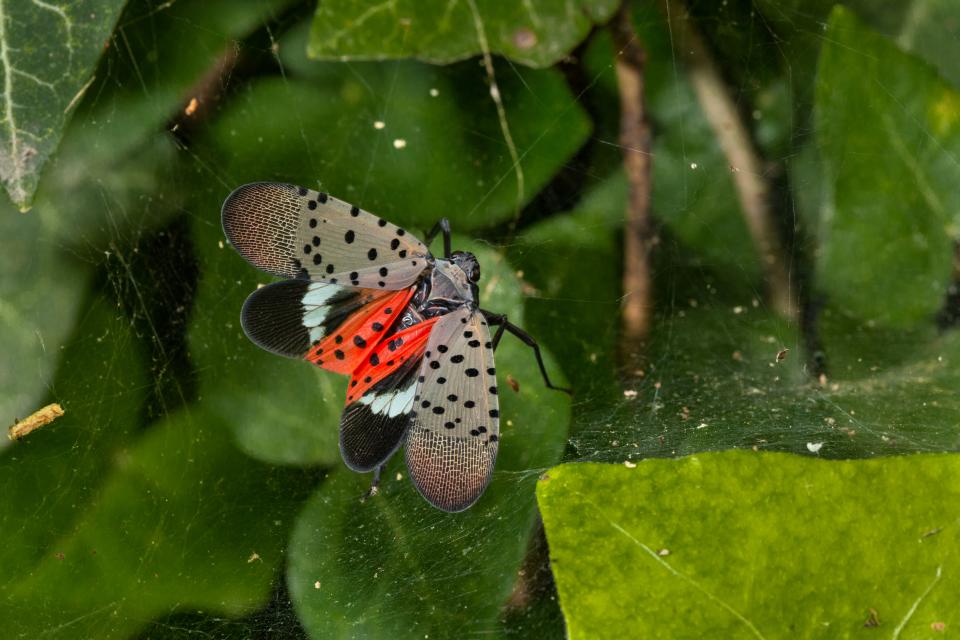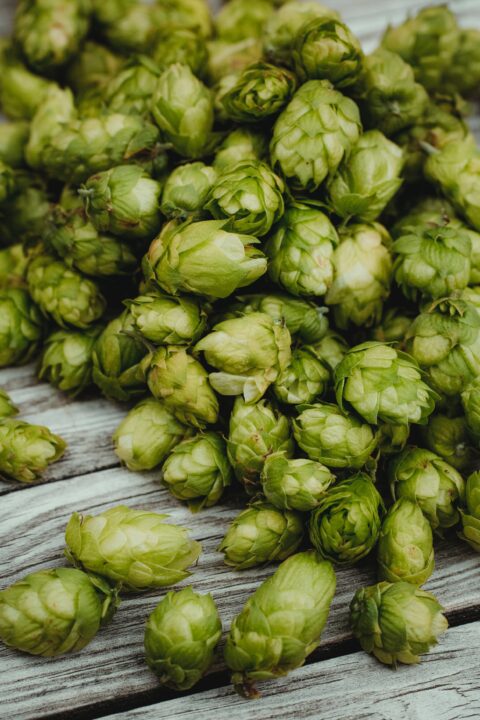Good Vibrations: The New Buzz About What’s Shaking up Spotted Lanternfly

Are spotted lanternflies really attracted to vibrations of power lines? Rumors had been flying around. Scientists are now verifying the rumors to be true. (photo credit: USDA)
Talk about hearing it through the grapevine. Rumor had it that spotted lanternflies — the dreaded vineyard pests from China — were gravitating toward vibration. That word eventually got around to the Gainesville, FL, office of Richard Mankin, an Entomologist with the USDA-ARS Center for Medical, Agricultural, and Veterinary Entomology. And did it ever take off from there.
“There were rumors that lanternflies are attracted to vibrations of buzzing electrical power lines,” Mankin said in a USDA blog. “So, we did a laboratory study of nymph and adult responses to 60-cycle (60Hz) vibrations.”
What did Mankin’s research find? “The rumor proved to be correct!” he said. “Both nymphs and adults walked toward the source of [the] vibrations.”
Mankin and his USDA colleagues had their research published in the Journal of Economic Entomology. Suddenly there is a new way to potentially corral and control the invasive insects.
‘Shocking’ Results
Most power lines in North America carry alternating current electricity at a rate of 60Hz. Using vibration to entice the lanternflies to gather is a major step toward improving control methods. Mankin said further research will focus on traps and finding ways to disrupt spotted lanternfly mating behavior.
Spotted lanternfly populations are currently found in 17 states: Connecticut, Delaware, Illinois, Indiana, Kentucky, Maryland, Massachusetts, Michigan, New Jersey, New York, North Carolina, Ohio, Pennsylvania, Rhode Island, Tennessee, Virginia, and West Virginia.
In Pennsylvania, where the insect was discovered in the U.S. for the first time in 2014, vineyards have experienced 45% to 100% loss of wine grape crops, such as ‘Pinot Noir’ and ‘Chardonnay’. Insecticide application in some vineyards and orchards in affected areas have gone from four applications per season to 14 applications, increasing industry expenditures and potential costs to the environment.
Successful development of an integrated pest management program could result in growers using fewer insecticide applications — saving time, energy, and money. It could also help reduce risk of pesticide exposure to pollinators and other inadvertent impacts to the environment.










